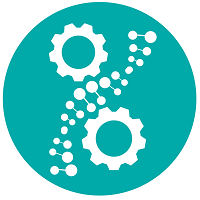Manufacturing & Analytical Characterization
Digital Toolbox for Advanced Continuous Pharmaceutical Manufacturing
Monday, October 21, 2024
9:00 AM - 9:30 AM MT
Location: 155 E

Ravendra Singh, PhD (he/him/his)
Faculty
Rutgers University
Piscataway, New Jersey
Speaker(s)
In this work, an integrated toolbox consisting of seven components namely artificial intelligence (AI)/machine learning (ML) tool, modelling and digital twin development tool, material traceability tool, optimization tool, real time quality control tool, cyber-physical security tool, and data management tool have been developed and implemented into the continuous pharmaceutical manufacturing process.
Four machine learning (ML) models have been trained to predict the response of continuous pharmaceutical manufacturing process and the performance of these ML models has been compared. The investigated ML methods are long short-term memory (LSTM), 1D convolution neural network (CNN), random forest (RF), and artificial neural network (ANN). The best performing ML model is then implemented into the continuous pharmaceutical tablet manufacturing process for real time prediction. A digital twin model of continuous pharmaceutical tablet manufacturing process has been also developed.
A systematic framework including the methods and tools have been developed for material traceability. A corresponding software tool has been also developed to automate the material traceability procedure. The heart of the material traceability toolbox is the RTD model. The applications of the developed methods and tools have been demonstrated for material traceability of continuous pharmaceutical manufacturing process.
A systematic framework including the methods and tools has been developed for dynamic optimization of the feeder refill strategies. The deviation of the outlet mass flow of the feeder from the targeted flow rate has been minimized to obtain the optimum value of the feeder refill parameters. The material properties also affect the refill strategy meaning that the feeder refill strategy need to be frequently optimized if there are any changes in the materials and plant.
An advanced model predictive control (MPC) system has been implemented in the continuous pharmaceutical manufacturing (CPM) pilot-plant. The CPP’s and CQA’s are controlled in real time. The critical control variables that have been controlled using model predictive control (MPC) system are drug concertation, powder level before tablet press, main and pre compression forces, tablet weight and hardness. A novel control strategy for powder level control in a chute placed in between blender and tablet press unit operation of continuous tablet manufacturing process has been developed, implemented, and evaluated. An RTD tool box has been developed to control the tablet potency in real time.
A systematic framework including the methods and tools have been also developed for proactive identification and mitigation of potential cyber-physical attack risk on continuous pharmaceutical manufacturing plant. The cyber-physical security relevant software tools such as Snap 7, Wireshark, and Tripwire have been applied to CPM. A novel software tool named CPS (Cyber-Physical Security) has been developed for cyber-physical security of the continuous pharmaceutical manufacturing. The integrated commercially available and developed (in house) cyber-physical security tools have added an extra layer of security of our continuous pharmaceutical manufacturing pilot-plant for any unexpected attacks.
All the relevant data generated during continuous manufacturing has been systematically collected, stored, and organized in a data hub (OSI PI) and cloud system as per industry 4.0 standard.
Four machine learning (ML) models have been trained to predict the response of continuous pharmaceutical manufacturing process and the performance of these ML models has been compared. The investigated ML methods are long short-term memory (LSTM), 1D convolution neural network (CNN), random forest (RF), and artificial neural network (ANN). The best performing ML model is then implemented into the continuous pharmaceutical tablet manufacturing process for real time prediction. A digital twin model of continuous pharmaceutical tablet manufacturing process has been also developed.
A systematic framework including the methods and tools have been developed for material traceability. A corresponding software tool has been also developed to automate the material traceability procedure. The heart of the material traceability toolbox is the RTD model. The applications of the developed methods and tools have been demonstrated for material traceability of continuous pharmaceutical manufacturing process.
A systematic framework including the methods and tools has been developed for dynamic optimization of the feeder refill strategies. The deviation of the outlet mass flow of the feeder from the targeted flow rate has been minimized to obtain the optimum value of the feeder refill parameters. The material properties also affect the refill strategy meaning that the feeder refill strategy need to be frequently optimized if there are any changes in the materials and plant.
An advanced model predictive control (MPC) system has been implemented in the continuous pharmaceutical manufacturing (CPM) pilot-plant. The CPP’s and CQA’s are controlled in real time. The critical control variables that have been controlled using model predictive control (MPC) system are drug concertation, powder level before tablet press, main and pre compression forces, tablet weight and hardness. A novel control strategy for powder level control in a chute placed in between blender and tablet press unit operation of continuous tablet manufacturing process has been developed, implemented, and evaluated. An RTD tool box has been developed to control the tablet potency in real time.
A systematic framework including the methods and tools have been also developed for proactive identification and mitigation of potential cyber-physical attack risk on continuous pharmaceutical manufacturing plant. The cyber-physical security relevant software tools such as Snap 7, Wireshark, and Tripwire have been applied to CPM. A novel software tool named CPS (Cyber-Physical Security) has been developed for cyber-physical security of the continuous pharmaceutical manufacturing. The integrated commercially available and developed (in house) cyber-physical security tools have added an extra layer of security of our continuous pharmaceutical manufacturing pilot-plant for any unexpected attacks.
All the relevant data generated during continuous manufacturing has been systematically collected, stored, and organized in a data hub (OSI PI) and cloud system as per industry 4.0 standard.
Learning Objectives:
- Upon completion, participants will be able to understand the complexities and challenges involved in continuous pharmaceutical tablet manufacturing process.
- Upon completion, participants will be able to understand the artificial intelligence (AI)/machine learning (ML) modelling
- Upon completion, participants will be able to understand the modelling and digital twin development, material traceability, optimization, real time quality control, cyber-physical security, and data management

